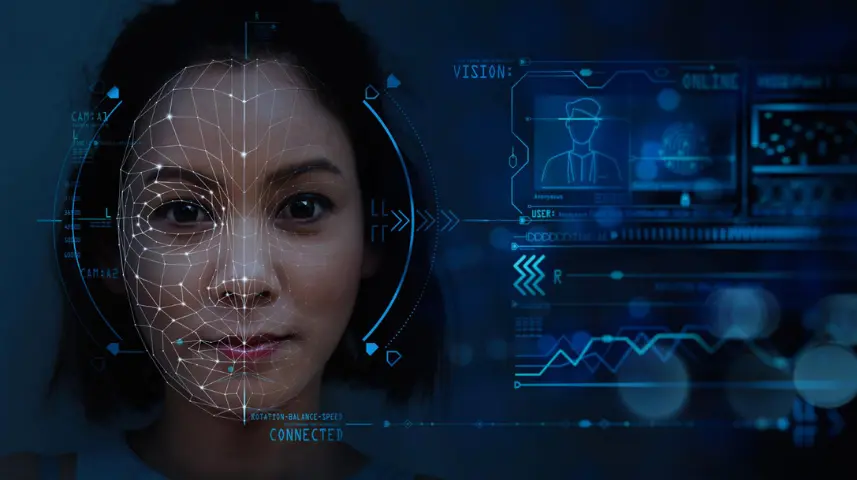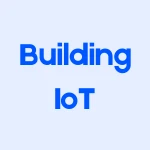
Facial Recognition Technology – A Few Applications
Biometric face recognition is an emerging technology that depends on machine learning techniques and is highly computational. Facial recognition technology has widespread applications across industries and sectors such as business, healthcare, automobile, security, and so on.
A face recognition system not only processes a person’s identity, but also collects demographic data. Moreover, being touchless, it is quite useful as a preventive measure for a pandemic like-scenario.
Facial Recognition Technology - What Is It?
Facial recognition technology is used to identify a person and allow her access to a service or a system.
The facial recognition system requires a device with photographic technology to generate and acquire the images of the face of a person. The data records biometric patterns of the face of the person. This is then stored in databases.
Integration of AI and machine learning has made it possible to analyze the incoming image mathematically with facial points. The system then verifies the biometric data with the image of the person whose face is being scanned in the facial recognition device.
In essence, the technology matches a human face with the help of a camera and then authenticates the person. In this manner, the system identifies and verifies the presence of a specific person wherever the system is installed.
This technology, therefore, is also used as a biometric security system.
How It Works?
“A facial recognition system identifies an individual and uses the information to improve and automate processes such as access control, security, and employee check-in and check-out time.”
1. Facial Image Registration
This is the primary step to all facial recognition systems. Here, the system processes the images given as input. It may be an image or a live presentation of the face of a person in front of the camera. On processing the image, a facial template is created with all the facial recognition points of the face. The visual photographic technology detects the face. It can also detect multiple faces, say, in a crowd based on the algorithm that it is working on.
2. Face Analysis And Representation
On detection of the face, the system starts gathering data that are specific to that particular person based on her facial features. The algorithm figures out the different facial points that exist. The system generally takes a 2D image as it is easier to process. Its aim is to identify all the special facial points in the face that will help distinguish that person from others. The technology reads the various facial feature coordinates including eye color, distance between the eyes, contour of lips, and so on.
3. Converting The Image To Data
On successful recognition of facial features, the data in the form of templates are stored in databases and uploaded in the cloud for safe storage. The templates help in easy and simple comparison. The facial feature data is then converted to a mathematical formulae known as the faceprint. Each and every person has their own faceprint.
4. Finding A Match
A database consists of thousands of different faces. Finding a match by the system depends on the enrollment speed - this is the time taken to process an image and find the perfect match and data corresponding to the detected face. For example, when a staff first uses a facial recognition system, the data with all her facial features is stored in the database. Later, this information can be accessed by the admin and other authorities to verify a staff's attendance.
A Few Key Features
1. Identity Verification
A facial recognition system identifies an individual and uses the information to improve and automate processes such as access control, security, and employee check-in and check-out time. It analyzes the characteristics of the person being scanned, such as her gender, age, and emotions.
2. Health Measures
A facial recognition system is touchless. Therefore, it is an effective preventive measure for pandemic such as the Covid19.
The system also has the capability to detect masks on faces. Therefore, it makes it easy to enforce policies. For example, if someone is not wearing a mask, her entry can be restricted.
Furthermore, with the addition of temperature sensors, facial recognition systems can also check the body temperature of a person before allowing her access to the premises.
3. Privacy Protection
Face-recognition-based systems have a built-in privacy protection. Sharing of information is not possible. Built-in privacy features include data encryption and data purging.
4. Predictive analytics
Face predictive analytics refers to the use of machine learning technology in determining changes in historical data and adopt proactive security measures and planning. In this manner, analytics can prevent crimes. Facial recognition systems help maintain face recognition data as per groups, offices, and locations to identify crime patterns.
Furthermore, predictive analytics with facial recognition technology helps monitor patients in hospitals. This enables early detection of health problems by monitoring symptoms on a continuous basis.
Applications Of Facial Recognition Technology
Premises with heavy inflow and outflow of people such as business parks, schools, airports cannot function efficiently by using a manual people tracking system. They need to have systems that automate their processes.
Let's discuss a few applications where facial recognition technology is used by firms in a business setup.
1. Facial Recognition Attendance System
A facial recognition attendance system uses facial recognition technology to identify and verify a person using the person's facial features and automatically mark attendance. The facial recognition system built by VersionX is used by organizations for keeping attendance records. No manual work is involved.
2. Visitor Management System
A touchless visitor management system identifies and authenticates a visitor. Facial recognition technology incorporated in a visitor management system prevents unauthorized entry of visitors in the building. A face-recognition based visitor management system matches all the necessary information and facial data of the visitor with the databases that are already stored in the system. This helps trace the visitor's activities in the premises - such as by keeping records of the timestamp of each visitor.
3. Mask Scan
Wearing a mask is one of the best ways to prevent Covid from spreading. A face recognition system can detect masks on people's faces and monitor whether a person accessing the premises is wearing a mask or not.
When connected to a touch sensor, it can be used as an automatic hand sanitizer equipment. When a visitor places her hand below the automatic hand sanitizer, a sanitizing liquid drops on her hand.
4. Access Control
This is one of the most important applications of a face recognition technology when integrated with access control - this refers to allowing restricted access to offices, buildings, and premises using access control hardware and software technology.
Access control systems such as doors and elevators are integrated with visitor entry and management systems. Instead of the key card, a facial recognition system allows the employee controlled access to areas like office premises, residential complexes, factories, airports, and so on.
Addition of facial recognition technology to access control systems using RFID tags leads to less chance of false identification. This allows the entry of authorized people while alarming security about unauthorized passage attempts.
5. Elevator
In elevators too, we can use facial recognition technology. VersionX has built facial recognition software to be used outside the elevators. Here, only staff of that particular office can get identified by the recognition system. On identification, the elevator opens and then the employee is taken to the floor where she has to go. This checks the entry of unidentified people into the building.
6. Fintech
Fintech refers to a technology that provides financial services through softwares like mobile payment, online banking, etc. Facial recognition technology is used in fintech in several ways. For example, in the case of a cardless ATM transaction, the facial recognition system installed in the ATM captures the person’s face. Then the software matches the face with its databases. On successful detection, the ATM asks for a 4-digit pin for a final verification.
7. Security Systems
A visitor management system integrated with facial recognition software can help in establishing a highly secure environment. This eliminates the need for manual intervention at each identification step. Even for employees, using only ID cards may not be enough to track their activities. Facial recognition systems can also be used in law enforcement. Police officers use this software in detecting criminals as well as finding missing people. Photographs are matched against various databases and then their possible locations are found.






